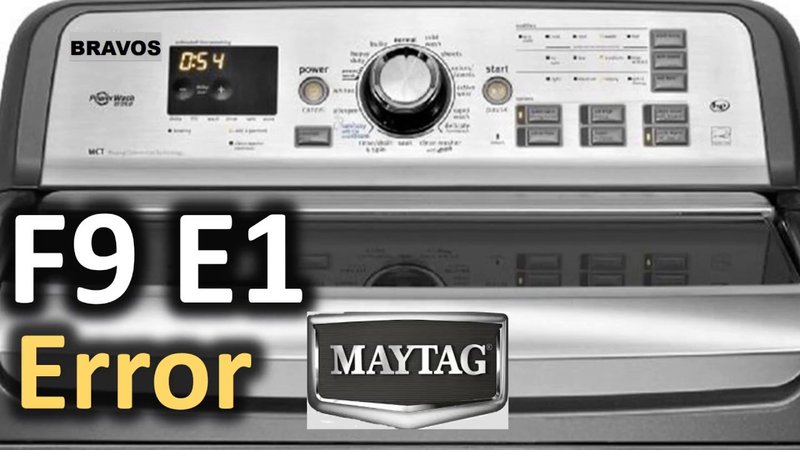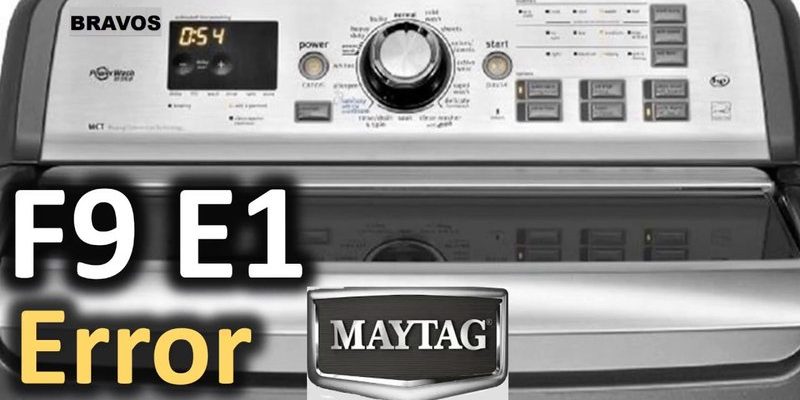
The E1 error code on a Maytag washing machine typically indicates a problem with the water supply. It’s like when you’re trying to fill a pot to boil pasta, but the faucet is just trickling. Your washing machine is expecting a smooth, consistent flow of water, but something is preventing that. This can happen for a variety of reasons, ranging from a simple kink in the hose to more complex issues with water pressure or valve failures. Let’s explore these potential causes in more detail and see when it’s time to call in a pro.
Understanding the E1 Error Code
The E1 error code is Maytag’s way of alerting you to a disruption in water filling. Picture it like a car’s check engine light—it’s a signal to investigate further rather than panic. Essentially, your washing machine is having trouble drawing in the water it needs to operate properly. This could mean there’s a problem with the water inlet hose, the water supply itself, or the internal valves that regulate the flow.
First, let’s consider the simplest cause: the water inlet hoses. Over time, these hoses can become kinked or blocked, much like a garden hose that’s been twisted or clogged. Checking for visible signs of distortion or obstruction should be your first step. If the hoses look good, you’ll then want to ensure that your water taps are fully open. Sometimes, the simplest solution is the right one, and turning a stubborn faucet handle can be the fix.
If you’re still seeing the E1 code, it might be time to look at potential issues with water pressure. Your washing machine requires a certain level of water pressure to function correctly—imagine trying to fill a balloon with air using just your breath instead of a pump. If the pressure’s too low, the machine can’t get enough water quickly enough. This may be due to clogged filters in the hoses or issues with your home’s plumbing.
When to Call a Technician
So, when should you pick up the phone and call a technician? If you’ve run through the basics and that pesky E1 code is still flashing, it could indicate a more serious issue with the internal parts of your washing machine. This might include the water inlet valve, which controls the flow of water into your machine. Think of it as the gatekeeper—if it’s faulty, no water gets where it needs to go. A technician can assess whether this valve needs repair or replacement.
Additionally, if you suspect an electrical issue is at play—such as a faulty control board—it’s definitely time for professional help. Electrical components can be tricky and even dangerous for untrained hands to handle. Sometimes the problem isn’t visible, like a hidden leak or an electrical fault, and these situations require the trained eye of a technician to diagnose and fix safely.
Calling a technician promptly can prevent further damage to your appliance and potentially save you money in the long run. If you hear unusual noises, notice water leaking, or encounter frequent errors beyond E1, these are red flags that shouldn’t be ignored. A timely service call might just be what you need to get things back on track.
Preventing Future Error Codes
Prevention is always better than cure, and with a bit of care, you can reduce the chances of facing the E1 error again. Regular maintenance is key—consider scheduling periodic inspections by a professional to catch issues before they become major problems. It’s akin to a regular health check-up for your appliance, ensuring everything is running smoothly.
Keep an eye on the condition of your hoses and ensure they are free from twists and blockages. Replacing them every few years can help prevent failures. Monitoring water pressure in your home and addressing plumbing issues promptly can also make a big difference. Think of these measures as setting your washing machine up for success, ensuring it has the resources it needs to do its job.
Lastly, always consult your Maytag manual for specific troubleshooting steps related to error codes. The manual is like the user guide to your machine’s health, offering insights and tips that can often preempt problems before they arise. With these steps, you’ll keep your washing machine happy and humming, reducing the likelihood of needing that technician’s number anytime soon.
